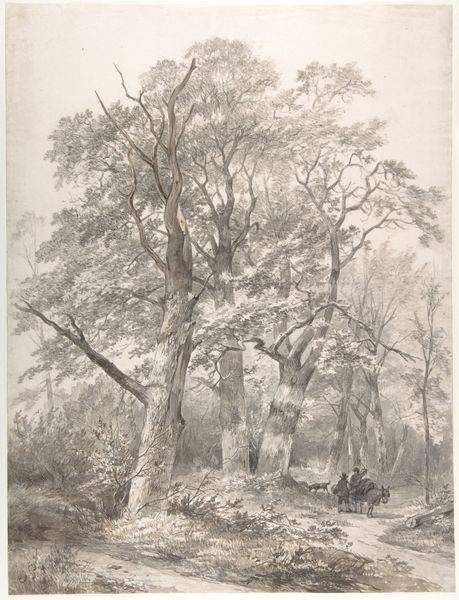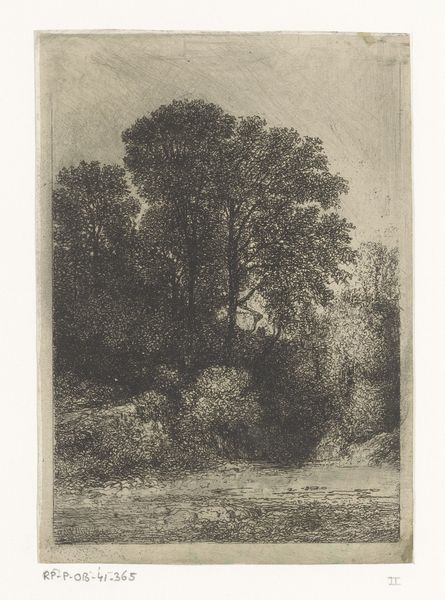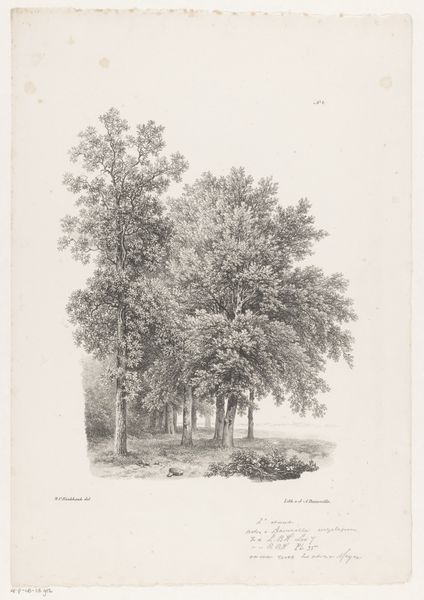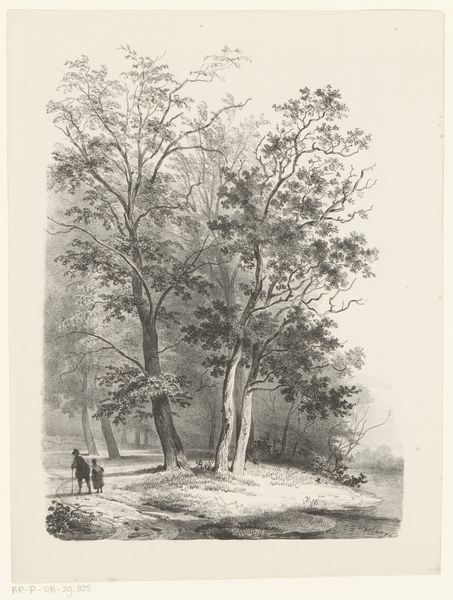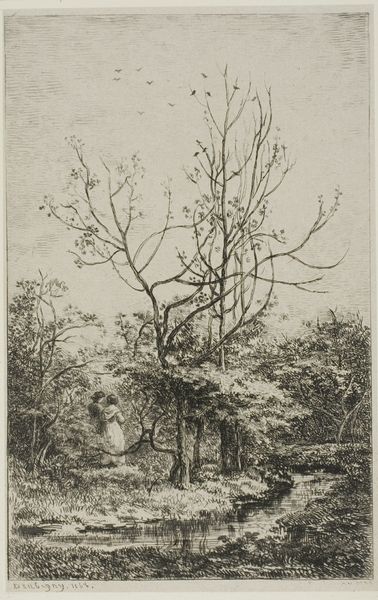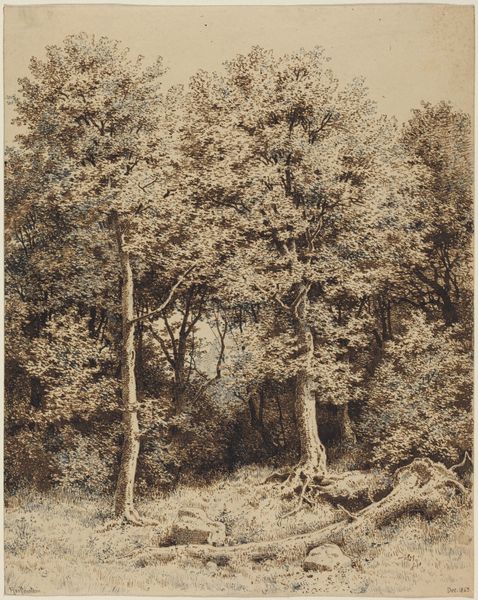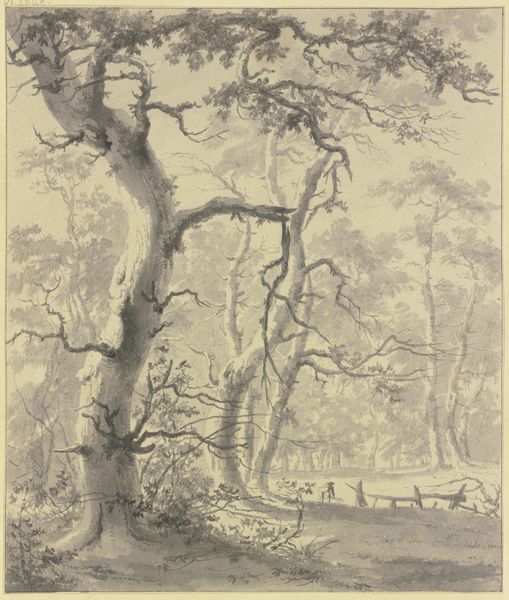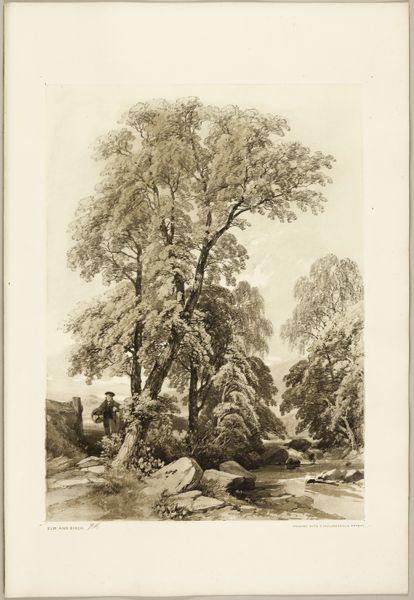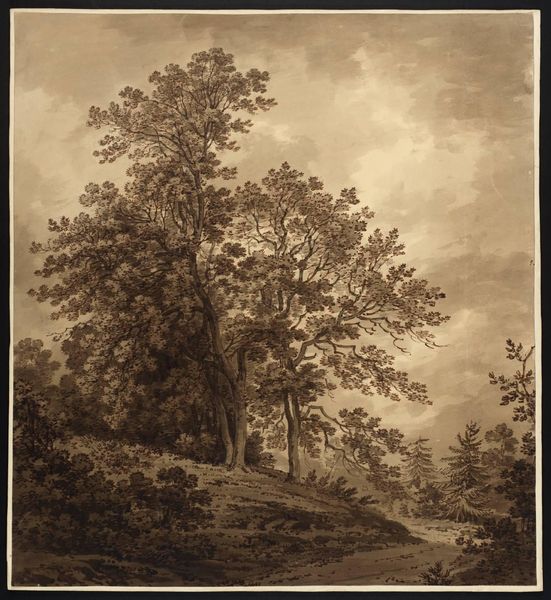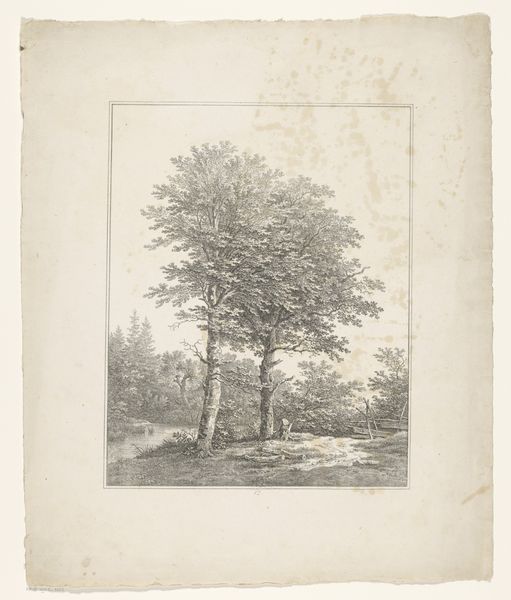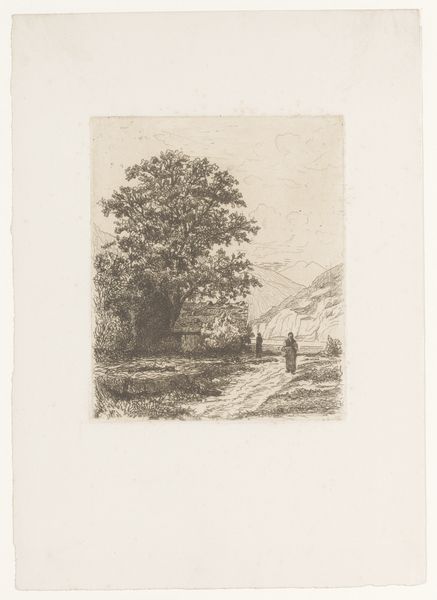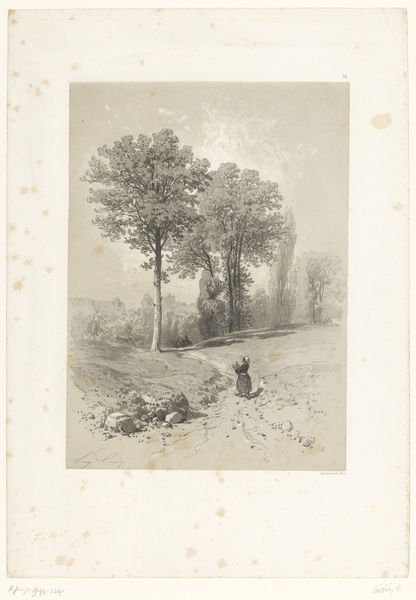
drawing, paper, pencil
#
drawing
#
landscape
#
paper
#
form
#
romanticism
#
pencil
#
line
Dimensions: height 318 mm, width 228 mm
Copyright: Rijks Museum: Open Domain
Curator: This pencil drawing, rendered by Pierre Louis Dubourcq circa 1840, is titled "Vrijstaande loofboom in landschap," or "Solitary Deciduous Tree in a Landscape". Editor: My immediate impression is one of immense stillness. Despite the density of the foliage and undergrowth, a profound calm permeates the scene, amplified by the monochromatic rendering. Curator: The romanticism of the era shines through, doesn't it? Note how Dubourcq elevates the tree to a symbol. It’s more than just a tree; it stands as a silent witness, evoking contemplation on time, nature, and our place within the larger world. Its placement almost center, certainly elevated and with all of the other components leading toward it reinforces the importance of the tree itself. Editor: Yes, I agree. Formally, it’s quite striking. The artist’s mastery of line and shading really creates a sense of depth, especially with the juxtaposition of that meticulously detailed foreground against the hazier background elements. I particularly notice the stippling technique in the crown of the tree, which lightens that area in a lovely way. Curator: Consider the tree as a cultural touchstone. In many traditions, a tree represents life, growth, and interconnectedness, it’s as much a formal exploration as it is a commentary on nature's enduring power. This symbolic tree invites introspection, and perhaps even a sense of personal connection to nature's persistent rhythms. Editor: An apt summation. Viewing "Vrijstaande loofboom in landschap" provides an exercise in patient observation. Each pass brings the viewer ever deeper into its intricacies and ultimately, to that powerful sense of quietude. Curator: And perhaps that's the true gift of the Romantics. They hold up the stillness for us, in a way that allows us to better see and contemplate ourselves within its space.
Comments
No comments
Be the first to comment and join the conversation on the ultimate creative platform.
